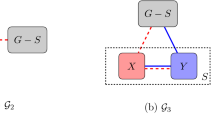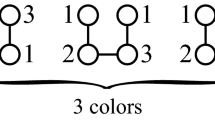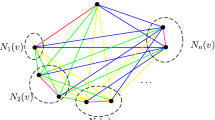Abstract
Letf(s, t; k) be the largest value ofm such that it is possible tok-color the edges of the complete graphK m so that everyK s ⊆K m has exactlyt colors occuring on its edges. The main object of this paper is to describe the behavior of the functionf(s,t;k), usually thinking ofs andt fixed, and lettingk become large.
Similar content being viewed by others
References
J. A. Bondy andU. S. R. Murty,Graph Theory with Applications, Amer. Elsevier, New York 1976.
T. A. Brown, (personal communication).
F. R. K. Chung andC. M. Grinstread, A survey of bounds for classical Ramsey numbers,J. Graph Th. 7 (1983), 25–38.
P. Erdős, A. Hajnal, V. T. Sós andE. Szemerédi, More results on Ramsey—Turán type problems,Combinatorica 3 (1) (1983), 69–81.
P. Erdős andR. Radó, Combinatorial theorems on classifications of subsets of a given set,Proc. London Math. Soc. 2 (1952), 417–439.
P. Erdős andV. T. Sós, Some remarks on Ramsey’s and Turán’s theorem,Combinatorial Theory and Its Applications, Colloq. Math. Soc. János Bolyai (1969), 395–404.
P. Erdős andE. Szemerédi, On a Ramsey type theorem,Per. Math. Hung. 2 (1972), 295–299.
R. L. Graham, Rudiments of Ramsey Theory,Amer. Math. Soc., Providence, 1981.
R. L. Graham, B. L. Rothschild andJ. H. Spencer, Ramsey Theory,John Wiley and Sons, New York, 1980.
Author information
Authors and Affiliations
Additional information
Dedicated to Paul Erdős on his seventieth birthday
Rights and permissions
About this article
Cite this article
Chung, F.R.K., Graham, R.L. Edge-colored complete graphs with precisely colored subgraphs. Combinatorica 3, 315–324 (1983). https://doi.org/10.1007/BF02579187
Received:
Issue Date:
DOI: https://doi.org/10.1007/BF02579187




